2023 Nissan Z Automatic Review

Love It | Leave It |
|---|---|
Style for days | Cheapo interior bits |
Accessible performance | Big price jump from Sport to Performance |
Great for long distances | Lacks the sports car precision of Supra, Camaro |
How many stylish, reasonably affordable two-door cruisers still exist on the market?
Calling the pickings slim is an understatement. Forget hot hatches; everything except the Mini is four-door now. Challenger? Dead at the end of this year. Camaro? Next year. Your choices are basically Mustang, Miata, or the Toyobaru twins—and the latter three are hardly cruisers, even with their optional (dull) automatic transmissions.
Nissan hasn't given up on the market, however. The 2023 Nissan Z can also be had with an automatic, and rolled into this year with a healthy shot of turbocharged power and drop-dead gorgeous styling. Enthusiasts will naturally flock to the more engaging manual, but does the slinky slushbox still make sense? I spent a week with one to find out.
What's new?
We've become pretty familiar with the reborn, number-less Z over the past year. Contributor (and noted Z aficionado) Chris Tonn drove it last summer. Then I took it around Quebec's excellent Circuit Mont Tremblant and the surrounding roads. A month later, it squared off with the Chevy Camaro, a match-up the Nissan lost. It just wasn't as sharp of a sports car as the big Bow Tie brute.
But that was the manual transmission. This automatic subtly reframes the Z, better matching the softer, languid vibe we got from the car last autumn. Opting for the auto adds three additional gears as it chops a pedal. It also adds weight—about 60 or so pounds—and ditches the carbon-fiber driveshaft and Exedy clutch of the six-speed. You do get a unique sport exhaust, however, which unlocks a more mellifluous note from that VR30 engine.
Nobody will know you're not rowing your own until they press their dirty mugs up against the glass to peer inside. And they will. Even in this subdued Boulder Grey hue, the Z's striking styling demands attention anywhere it rolls. There are so many clever design touches here: the LED headlight signature evoking the reflections from the 240Z's glass light covers; the domed hood; the brilliant black-bar taillight design evolving the 300ZX's look. The Z nods to nostalgia but is never a slave to it, looking thoroughly modern—and not angry. Bake in extra travel time to account for all the questions from bystanders.
Driving experience
I've said it before, and it bears repeating here: the Z has to be one of the most approachable 400-horsepower machines out there. A long-travel throttle pedal makes it easy to mete out each individual pony, while the wide 275-section rear tires deliver the full corral to the pavement. The 350 pound-feet is notably less than what the GR Supra pumps out, to say nothing of the V8-powered competition. But on the flip side, it means the tires aren't regularly overwhelmed, nor is the traction control light SOS'ing itself into a frenzy in the digital instrument cluster. The Z grips and goes—there's even a launch control feature if you're into that sort of thing.
Hauling the Nissan back down from those speeds isn't as satisfying. There's an initial sogginess to the left pedal that saps confidence, and makes it hard to be smooth. That's with the upgraded brakes of this Performance spec, too: 14.0 inches up front, and 13.8 inches out back. I can only wonder how the base Sport trim would handle this road with smaller stoppers and equal-width 245s at all four corners.
The Mercedes-sourced nine-speed is generally well-judged when left to its own devices. It's possible to catch the 'box out after a combo of heavy braking and part-throttle, but in most everyday scenarios it performs without issue. A Sport drive mode gives it more aggressive shift patterns (and sharpens throttle response). Switch over to manual control, and the aluminum paddles provide a comforting level of control. There's good travel to their actuation, but the software refuses to issue multiple downshifts with quickness. Shift, pause, shift, pause, shift.
This sounds like a problem, but I say it's fine for the target buyer. The auto-equipped Z still has the softer, fluid suspension tuning that we witnessed last year. With the manual that felt at odds; here, the laidback auto is more in tune with the rest of the car, like when you match the gait of your friend on a walk. There's a lot of road noise, more than I'd consider proper for a quote-unquote grand tourer, but beyond that the Z handles longer distances with aplomb. The fixed-rate suspension takes sharp bumps and odd cambers in stride, and stays level through hotter corners.
The steering is light on weight and feedback, but gains a welcome amount of the former once you've wound on some lock. I do appreciate Nissan sticking to a thin rim, too.
Interior cheapness
It's safe to say Nissan has stuck to a lot of things inside the Z. While just about everything outside is new, the interior is much more noticeably 370Z, with a few key upgrades.
First, major kudos to whomever it was within Nissan who pushed for the blue leather and synthetic suede. It's a welcome splash of color, and the two-tone look highlights the horizontal nature of the cabin redesign. There's a pleasing simplicity here, allowing the driver to get in, get comfortable, and get on driving. Again, a bit of retro, but done well.
The retro bits I'm not loving are the two-decade-old seat heater switches on the center console. In fact, the entire console itself is a bit of an eyesore, one slab of black plastic betwixt two pretty seats. Folks with long torsos like me will wonder why the driver's seat can't come down another two or three inches, but the seat itself is comfortable and supportive without being too aggressive.
The door handles are another pain point, because there's no way to avoid touching them and being reminded of their cheapness. I understand the Z is a niche project, with a small budget, but surely these bits could've got some—any—attention?
Useful tech upgrade
By joining this decade, the Z gets a serious tech upgrade. The infotainment screen is much better now, and the digital instrument cluster is fantastic. Nissan's current user interface ain't pretty, but it's easy to navigate and reasonably quick in its response times. One unfortunate bit of region-specific separation: Canada gets saddled with the 8.0-inch screen and its wired Apple CarPlay and Android Auto no matter what. American Performance models get a 9.0-inch setup and wireless phone mirroring. Then again, without a wireless charging pad, you're going to need a phone-leash anyway.
There isn't a heated steering wheel, either.
Regardless of transmission choice, new Z buyers gain access to a thoroughly modern set of driver assists. There's full-range adaptive cruise control—a rarity on manuals—plus solid lane-keep tech, blind spot monitoring (kept in the cabin, smart), parking sensors, rear cross-traffic alert, and driver attention alert. A 360-degree camera would take any last vestige of guesswork out of placing that long nose, and a head-up display would better match the competition, but the Z now feels far more current.
Dollars and sense
The Z Performance keeps pricing super-simple in the US. The MSRP is $52,085 including destination, and the only cost options are the exterior paint. The entry-level Sport is a useful $10,000 cheaper, but ditches the pretty Rays wheels, limited-slip diff, leather interior, upgraded infotainment, and other bits. The price is the same no matter which transmission you pick.
In Canada, the delta is $12k between trims, with the Performance ringing in at $60,448 CAD including destination. There's an additional $1,500 CAD for the nine-speed north of the border however, and then the $950 CAD for the two-tone paint.
The six-cylinder Supra starts north of the Z in both markets, comes with less equipment, and isn't any better as a touring car, not least because you can't even drive with the windows down. As we detailed last year, the Camaro is the performance choice, but it's a tank to sit in, and lacks all the stylistic grace of the Nissan. The jury is still out on the 2024 Mustang—but we'll know what it's like very soon.
Verdict: 2023 Nissan Z Automatic Review
The 2023 Nissan Z does so much with so little. While some may scoff at the carryover chassis, it feels wholly different from what came before: more mature, more progressive, and yes, much quicker.
No longer is "automatic" a dirty word, either. The nine-speed is naturally less involving than the three-pedal setup, but it unlocks a side of Nissan's fair lady we haven't seen since the '90s: that of the unfussed grand tourer. If you can overlook the occasional low-rent interior bits, and the odd gaps in the equipment list, the latest self-shifting Z offers a unique blend of style and laidback pace.
Become an AutoGuide insider. Get the latest from the automotive world first by subscribing to our newsletter here.

Kyle began his automotive obsession before he even started school, courtesy of a remote control Porsche and various LEGO sets. He later studied advertising and graphic design at Humber College, which led him to writing about cars (both real and digital). He is now a proud member of the Automobile Journalists Association of Canada (AJAC), where he was the Journalist of the Year runner-up for 2021.
More by Kyle Patrick



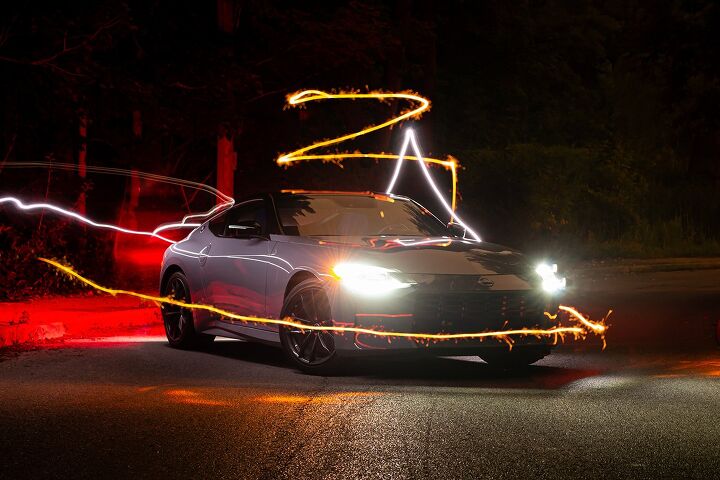
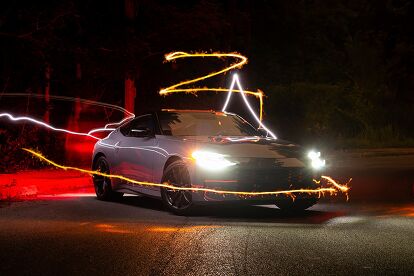

















































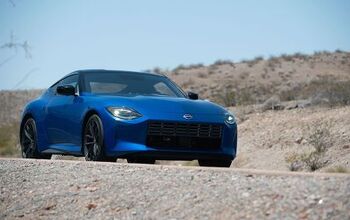

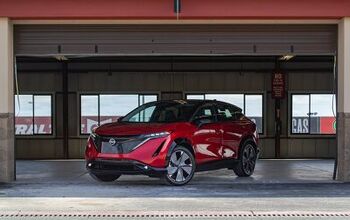

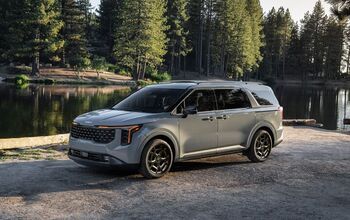



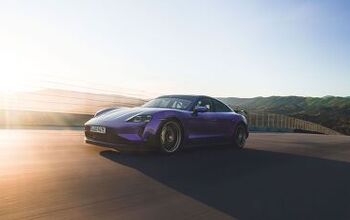

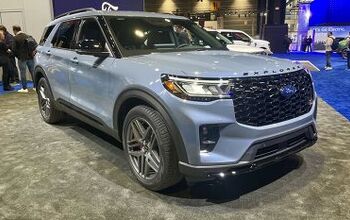
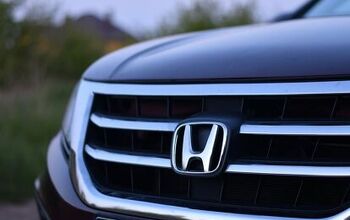

Comments
Join the conversation